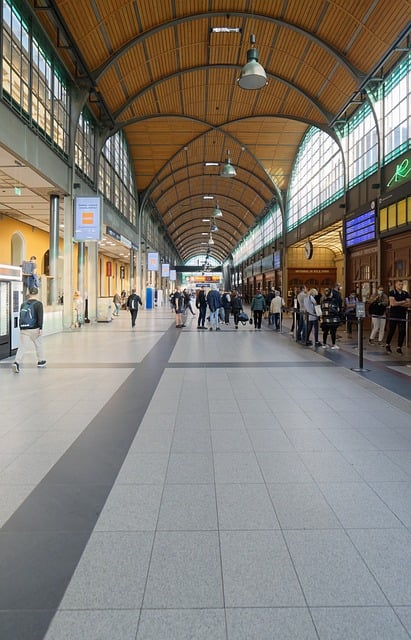Vignette Ticket Trends: What’s Next in Travel Innovation
The transformation of the travel industry over recent years has been nothing short of remarkable. Emerging technologies, changing consumer behaviors, and new business models have fundamentally reshaped the way people explore the world. Among the rapidly evolving components of this industry are the ticketing systems that enable travelers to navigate their journeys seamlessly. One area gaining traction is the vignette ticketing system — a model traditionally used in specific areas, particularly in Europe, that has potential implications for global travel innovation. In this article, we delve into the current trends surrounding vignette tickets, the challenges they present, and what we can anticipate for the future of travel innovation.
Understanding Vignette Ticketing
At its core, a vignette ticket is a form of travel pass that grants users the right to use certain services or access specific areas without the need for traditional individual tickets for each journey. Vignettes are often used for road tolls, public transport systems, or when accessing certain natural parks. They simplify the payment process and enhance the travel experience by allowing users to focus on their journey rather than logistics.
The concept of a vignette ticket often involves a prepaid system where users can purchase a ticket valid for specific periods — daily, weekly, monthly, or annually. This approach has seen significant uptake across Europe, particularly in countries like Switzerland, Austria, and Hungary where road vignettes are required for vehicle use on highways and designated areas.
The Rise of Integrated Ticketing Systems
One of the most significant trends in travel innovation is the integration of diverse ticketing services into a single streamlined platform. Instead of requiring travelers to buy separate tickets for trains, buses, and other transport options, integrated systems facilitate seamless travel experiences. Vignette tickets can play a crucial role in this integration by allowing users to access multiple services through a single purchase.
The integration of ticketing not only simplifies the user experience but also generates vast amounts of data that can be analyzed to improve services and customer satisfaction. Travel tech companies and public transport authorities are experimenting with smartphone apps that bundle various services together — combining travel routes, ticket access, and real-time notifications to create a holistic travel solution.
Digital Transformation in Vignette Ticketing
The evolution of digital technology is also a key driver in the innovation of vignette ticketing practices. The use of mobile applications and contactless payments has rapidly become the norm, making it easier for travelers to purchase and validate their tickets. Vignette tickets are increasingly being offered in digital formats that can be easily stored on mobile devices, enabling tagging of ticket purchases to user accounts and facilitating quick and easy access to services.
Blockchain technology is another promising development in this sector. Through decentralized digital ledgers, travel companies can create immutable records of ticket purchases, enhancing security and reducing the risk of fraud. Furthermore, smart contracts can automate the issuance and validation of vignette tickets, making the system more efficient and user-friendly.
Consumer Behavior and Changing Expectations
To appreciate the future of vignette tickets in travel innovation, we also need to understand shifting consumer behavior. In a post-pandemic world, travelers increasingly expect flexibility, transparency, and ease-of-use. This evolution has led to the popularity of flexible ticketing options that accommodate changes in plans without incurring exorbitant fees. Vignette tickets, which typically allow for varied usage within a certain time frame, naturally align with these shifting expectations.
Additionally, consumers are becoming increasingly conscious of environmental impacts. This awareness is driving demand for sustainable travel options. Vignette systems that promote the use of public transportation through incentives or discounts could effectively support environmentally-friendly practices by encouraging travelers to opt for collective transport solutions rather than individual vehicle use.
Challenges Facing Vignette Ticketing Systems
Despite the potential benefits and innovations, the implementation of vignette ticketing systems is not without its challenges. One significant hurdle is the lack of standardization across different regions and transport services. Vignettes that are widely accepted in some areas may not have the same applicability in others, leading to confusion and potential frustration for travelers.
Another challenge is ensuring that ticket validation systems can keep pace with the rapid advancement of technology. For example, as the transition to cashless transactions accelerates, travel authorities must invest in infrastructure to support seamless digital transactions, fraud prevention, and customer service.
Moreover, as data-driven technologies and systems continue to develop, concerns regarding user privacy and data security arise. Travelers are increasingly cautious about how their personal information is used, necessitating careful handling of data and clear communication with consumers about privacy policies and practices.
The Future of Vignette Ticketing and Travel Innovation
Looking ahead, the future of vignette ticketing will likely be shaped by several intersecting trends. The ongoing integration of artificial intelligence (AI) and machine learning into travel services can lead to more personalized user experiences. For instance, predictive algorithms can analyze travel behaviors, enabling the development of dynamic vignettes that adjust pricing based on demand or offer personalized services based on user preferences.
Virtual and augmented reality technologies may also play a role in enriching the travel experience. Imagine a future where users can explore destinations digitally before committing to travel, utilizing their vignette tickets to plan informed and personalized itineraries.
Furthermore, as we progress into an era of smart cities, ticketing systems will need to evolve alongside urban infrastructures. Integrated vignette systems in smart cities could work in tandem with IoT (Internet of Things) devices, utilizing real-time data to optimize traffic flow, minimize congestion, and enhance the overall travel experience.
In conclusion, vignette ticketing represents a significant opportunity within the travel innovation landscape. As technologies continue to evolve and consumer expectations transform, vignette systems will likely play a pivotal role in the future of travel. Through the integration of services, a focus on sustainability, and the incorporation of new technologies, the evolution of vignette ticketing promises to enhance the traveler experience while also addressing the challenges of our dynamic world.


